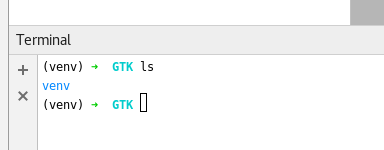Python实现的人工神经网络算法示例【基于反向传播算法】
本文实例讲述了Python实现的人工神经网络算法。分享给大家供大家参考,具体如下:
注意:本程序使用Python3编写,额外需要安装numpy工具包用于矩阵运算,未测试python2是否可以运行。
本程序实现了《机器学习》书中所述的反向传播算法训练人工神经网络,理论部分请参考我的读书笔记。
在本程序中,目标函数是由一个输入x和两个输出y组成,
x是在范围【-3.14, 3.14】之间随机生成的实数,而两个y值分别对应 y1 = sin(x),y2 = 1。
随机生成一万份训练样例,经过网络的学习训练后,再用随机生成的五份测试数据验证训练结果。
调节算法的学习速率,以及隐藏层个数、隐藏层大小,训练新的网络,可以观察到参数对于学习结果的影响。
算法代码如下:
#!usr/bin/env python3
# -*- coding:utf-8 -*-
import numpy as np
import math
# definition of sigmoid funtion
# numpy.exp work for arrays.
def sigmoid(x):
return 1 / (1 + np.exp(-x))
# definition of sigmoid derivative funtion
# input must be sigmoid function's result
def sigmoid_output_to_derivative(result):
return result*(1-result)
# init training set
def getTrainingSet(nameOfSet):
setDict = {
"sin": getSinSet(),
}
return setDict[nameOfSet]
def getSinSet():
x = 6.2 * np.random.rand(1) - 3.14
x = x.reshape(1,1)
# y = np.array([5 *x]).reshape(1,1)
# y = np.array([math.sin(x)]).reshape(1,1)
y = np.array([math.sin(x),1]).reshape(1,2)
return x, y
def getW(synapse, delta):
resultList = []
# 遍历隐藏层每个隐藏单元对每个输出的权值,比如8个隐藏单元,每个隐藏单元对两个输出各有2个权值
for i in range(synapse.shape[0]):
resultList.append(
(synapse[i,:] * delta).sum()
)
resultArr = np.array(resultList).reshape(1, synapse.shape[0])
return resultArr
def getT(delta, layer):
result = np.dot(layer.T, delta)
return result
def backPropagation(trainingExamples, etah, input_dim, output_dim, hidden_dim, hidden_num):
# 可行条件
if hidden_num < 1:
print("隐藏层数不得小于1")
return
# 初始化网络权重矩阵,这个是核心
synapseList = []
# 输入层与隐含层1
synapseList.append(2*np.random.random((input_dim,hidden_dim)) - 1)
# 隐含层1与隐含层2, 2->3,,,,,,n-1->n
for i in range(hidden_num-1):
synapseList.append(2*np.random.random((hidden_dim,hidden_dim)) - 1)
# 隐含层n与输出层
synapseList.append(2*np.random.random((hidden_dim,output_dim)) - 1)
iCount = 0
lastErrorMax = 99999
# while True:
for i in range(10000):
errorMax = 0
for x, y in trainingExamples:
iCount += 1
layerList = []
# 正向传播
layerList.append(
sigmoid(np.dot(x,synapseList[0]))
)
for j in range(hidden_num):
layerList.append(
sigmoid(np.dot(layerList[-1],synapseList[j+1]))
)
# 对于网络中的每个输出单元k,计算它的误差项
deltaList = []
layerOutputError = y - layerList[-1]
# 收敛条件
errorMax = layerOutputError.sum() if layerOutputError.sum() > errorMax else errorMax
deltaK = sigmoid_output_to_derivative(layerList[-1]) * layerOutputError
deltaList.append(deltaK)
iLength = len(synapseList)
for j in range(hidden_num):
w = getW(synapseList[iLength - 1 - j], deltaList[j])
delta = sigmoid_output_to_derivative(layerList[iLength - 2 - j]) * w
deltaList.append(delta)
# 更新每个网络权值w(ji)
for j in range(len(synapseList)-1, 0, -1):
t = getT(deltaList[iLength - 1 -j], layerList[j-1])
synapseList[j] = synapseList[j] + etah * t
t = getT(deltaList[-1], x)
synapseList[0] = synapseList[0] + etah * t
print("最大输出误差:")
print(errorMax)
if abs(lastErrorMax - errorMax) < 0.0001:
print("收敛了")
print("####################")
break
lastErrorMax = errorMax
# 测试训练好的网络
for i in range(5):
xTest, yReal = getSinSet()
layerTmp = sigmoid(np.dot(xTest,synapseList[0]))
for j in range(1, len(synapseList), 1):
layerTmp = sigmoid(np.dot(layerTmp,synapseList[j]))
yTest = layerTmp
print("x:")
print(xTest)
print("实际的y:")
print(yReal)
print("神经元网络输出的y:")
print(yTest)
print("最终输出误差:")
print(np.abs(yReal - yTest))
print("#####################")
print("迭代次数:")
print(iCount)
if __name__ == '__main__':
import datetime
tStart = datetime.datetime.now()
# 使用什么样的训练样例
nameOfSet = "sin"
x, y = getTrainingSet(nameOfSet)
# setting of parameters
# 这里设置了学习速率。
etah = 0.01
# 隐藏层数
hidden_num = 2
# 网络输入层的大小
input_dim = x.shape[1]
# 隐含层的大小
hidden_dim = 100
# 输出层的大小
output_dim = y.shape[1]
# 构建训练样例
trainingExamples = []
for i in range(10000):
x, y = getTrainingSet(nameOfSet)
trainingExamples.append((x, y))
# 开始用反向传播算法训练网络
backPropagation(trainingExamples, etah, input_dim, output_dim, hidden_dim, hidden_num)
tEnd = datetime.datetime.now()
print("time cost:")
print(tEnd - tStart)
更多关于Python相关内容感兴趣的读者可查看本站专题:《Python数据结构与算法教程》、《Python加密解密算法与技巧总结》、《Python编码操作技巧总结》、《Python函数使用技巧总结》、《Python字符串操作技巧汇总》及《Python入门与进阶经典教程》
希望本文所述对大家Python程序设计有所帮助。

